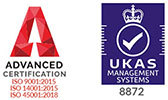According to the HSE, around 123 people who worked in the manufacturing industry were killed in work-related accidents between 2021 and 2022. The same source claims that 23 of those were caused by falling objects, 18% occurred due to handling, lifting or carrying, and 42% involved vehicles that were involved in crushing or tipping over.
In addition, according to Thompson’s Solicitors, some of the most common causes of warehouse accidents, from 2018 to 2019 include: slips, trips and falls, lifting heavy items, crushing, colliding with machinery and falling objects. Particularly in a warehouse, all of the aforementioned things are a prominent part of working in such a setting, which is why it’s all the more important for warehouse owners and managers to implement as many measures as possible that will keep employees safe from harm.
We’ve touched on some worrying statistics, all of which we should be paying attention to. We need to endeavour to cut the risk of those accidents occurring and mitigate the causes of those accidents in the workplace, regardless of the industry you work in. With this in mind, here are a few ways in which you can reduce forklift accidents in the warehouse.
Ensure your employees are fully-trained
All of your warehouse workers need to be fully-trained in their prospective roles. From those on the warehouse floor to your forklift operators, everyone needs to be aware of how they should behave in and around the workplace and whilst they’re fulfilling their roles. For example, forklift operators should be aware of the speed they need to travel at in order to be safe.
They should also know how to take corners and travel across different gradients as safely as possible, in addition to other things. In order to ensure that your material handling operators are as fresh in their knowledge as possible, they need to be regularly attending refresher courses in health and safety.
The same goes for your workers who are on the ground and who are not trained in forklift operation or in the operation of any form of material handling machinery. This is to make sure that they know what to do whilst a forklift is in operation, such as standing in certain zones or knowing how far away to stand, for example.
No matter the role of your employees, everyone needs to be fully-trained in health and safety in the warehouse if you’re wanting to reduce the number of accidents that happen in your warehouse or distribution centre. This is the same for any industry.
Carry out routine maintenance checks & inspections
In order to ensure that everyone is safe, regardless of the industry you might work in, you need to carry out regular inspections and maintenance checks. These need to be conducted on everything from machinery to fire alarms on a regular basis and by a competent person.
Not only does this protect your employees from accidents that might occur as a result of malfunctioning or failing machinery, but it also keeps everyone safe should the premises suffer a workplace fire, for instance.
This would be the same requirement of any business, from an office building to a construction site. When it comes to checking your machinery for any safety issues, the following things should be looked at, by a competent individual, in detail:
- Brakes
- Tyres
- Hydraulics
- Alarms
- Lights
Forklifts should only be operated from inside the cab
It might be tempting for your workers to move a forklift from A to B simply by releasing the handbrake, but it’s greatly frowned upon and is not at all recommended. This is because, from outside of the cabin, you do not have any control over the machine, which is dangerous when you’re working with a vehicle that’s considerable in size.
It would be easy to lose control, allowing the forklift to travel, at speed, down gradients and into people, stock or other pieces of material handling equipment. Even for the most simple of jobs, your forklift operators need to be climbing into the forklift cabin to manoeuvre it or lift loads. Not only does this protect them, but it also protects those who are in the vicinity.
Make sure that forklifts are only ever used for their intended purpose
Forklifts should only ever be used for the purposes that they were designed for. Unless you have the right forklift attachments on hand, forklifts should only ever be used for lifting and transporting loads that fall within its weight capacity. It might be tempting to use them to move other pieces of equipment, for example, or to give people rides on from point A to point B, but this should always be refrained from.
Not only do you risk the safety of the forklift operator, due to the forklift tipping over, for instance, but you’re also putting everyone who might be in the vicinity at risk. Only ever use the forklift for applications that they’ve been designed for. Always consult the manual if you aren’t sure about anything and make sure you’re using the right forklift attachments if it can be used to remove snow from paths, for example.
Multy Lift has over three decades of experience in the material handling industry. In that time, we have continued to provide customers throughout the UK with high-quality warehouse machinery that will stand the test of time. From forklifts and reach trucks to order pickers and industrial cleaning equipment, we’ll be able to meet your every material handling need. For further information about how we can help you today, get in touch with a member of our professional team – we’re always pleased to hear from you.







